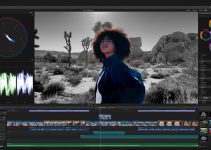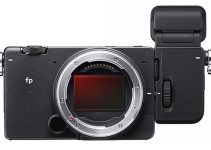“Reflections of Uyuni” is another great example that reveals the true potential and limitless creative possibilities of the real visionary artists such as Enrique Pacheco, who stands behind the project. It’s also another solid proof showing that you don’t need to own the most expensive gear to create something exceptional and inspiring as long as you have the talent, experience, and motivation along with the chance to be in the right place at the right time.
Time-lapse photographer, Enrique Pacheco shot this beautiful time-lapse at Salar de Uyuni in Bolivia, using the Sony A7s and A7 equipped with a Zeiss FE 16-35mm f/4 and Canon EF 70-200m f/2.8 lenses and a motorized slider. Salar de Uyuni the world’s largest salt flat with its 4,000 square miles is one of those magical places on the planet that should be seen at least once in a lifetime.
Reflections from Uyuni from Enrique Pacheco on Vimeo.
Even though Enrique Pacheco specialized on shooting time-lapse sequences using mainly DSLR cameras at the beginning of his career, now he is one of the keen supporters of mirrorless technology. In an extensive article on his blog he shares his insights on the topic and explains why the mirrorless cameras are the better choice. According to him, for instance, the electronic viewfinder shouldn’t be treated as an inferior part of the mirrorless system compared to the optical one that the DSLR cameras provide.
If you used your DSLR camera once for the video recording, you’ve experienced the problem of not being able to look through the optical viewfinder (the one you admire so much) as activating the live view the mirror flips up completely nullifying the mentioned viewfinder.
If you are in an interior it may not be a big deal, but if you are in the exterior with a lot of light you’ve seen that it’s impossible to frame well, more difficult to focus accurately on the small screen of your DSLR, which has almost become a mirror for the light. The solution is to buy an electronic viewfinder like Zacuto, which costs 1000$ and is almost as big as your DSLR.
Well, this doesn’t happen with the cameras without the mirror, as our electronic viewfinder provides us a right vision in any situation, including exteriors with a lot of light.
Pacheco also writes about the advantages of the form factor, the reduction of the mechanical elements, the overall flexibility and efficiency of the mirrorless system. All in all, Enrique Pacheco believes in the fact that the mirrorless cameras are the future and forecasts that “the general brands sooner or later will go through the hoop and embrace the “mirrorless” concept as a normal one.”
Enrique Pacheco is a professional cinematographer from Spain with more than 12 years of experience working in video production. Some of his latest short films “Shaped by Time”, “Made on Earth” and “The Maghreb” have been very successful on the internet and in various festivals. As a Vimeo Staff Pick “Reflections of Uyuni” generated more than 70K views just in a couple of days after its release and it’s also available for license in HD and 4K UHD.
[via PetaPixel, source: Enrique Pacheco Blog]
Disclaimer: As an Amazon Associate partner and participant in B&H and Adorama Affiliate programmes, we earn a small comission from each purchase made through the affiliate links listed above at no additional cost to you.



